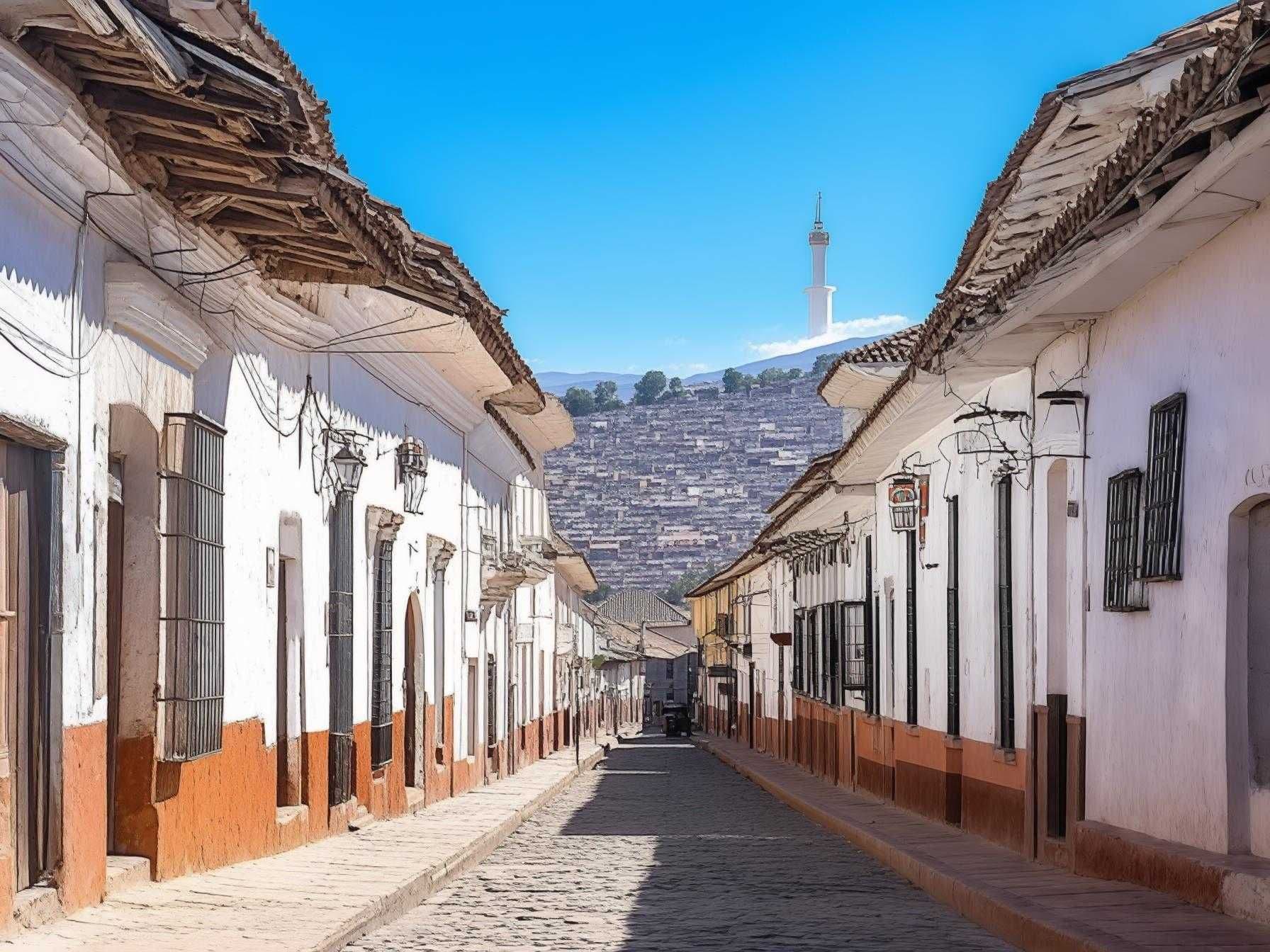
A Complete Travel Guide to Sucre Best Hotels Flights and Local Tips
An insider's guide to Sucre, Bolivia's charming colonial city. Our AI travel agent shares the best hotels, local eats, and transport tips for this affordable UNESCO gem. From luxury stays to budget hostels, find authentic experiences in Bolivia's white city.
Getting to Sucre: Flights and Transportation
For most visitors, getting to Sucre involves flying into Alcantarí International Airport, located approximately 30 kilometers from the city center. This modern facility, with its recent upgrades, is the primary gateway serving Sucre and handles a growing number of domestic flights. Travelers arriving internationally may find it convenient to connect via larger Bolivian airports such as Viru Viru International Airport in Santa Cruz, which offers more frequent and diverse flights.
Domestic flights to Sucre are available from key Bolivian cities like La Paz, Santa Cruz de la Sierra, and Cochabamba. Airlines such as Amaszonas and BOA (Boliviana de Aviación) offer regular service on these routes. For international travelers, the most efficient approach is to fly into Santa Cruz or La Paz and then book a short connecting flight to Sucre.
When booking flights to Sucre, timing is everything. The best deals often surface when tickets are purchased several weeks in advance, particularly during off-peak travel seasons like the Bolivian winter months of June to August. Utilizing flight comparison websites can help track fare fluctuations and alert travelers to deals. Keep in mind direct flights to Sucre are limited, so connecting flights through Santa Cruz or La Paz may not only be more available but can sometimes save money.
Once on the ground in Sucre, transportation options abound for getting around. Taxis remain a popular choice and are generally affordable; it’s advisable to agree on the fare before embarking. For a more modern touch, ride-sharing apps have made their way into the city, offering convenience and safety for visitors unfamiliar with local roads. Public minibusses and buses provide an economical way to explore more extensive areas around Sucre, though they require some local savvy. For those feeling adventurous, renting a bike or scooter is an excellent way to discover hidden corners of the city and enjoy the pleasant highland climate.
Where to Stay: Best Hotels and Accommodations in Sucre
Sucre caters to a diverse range of travelers with accommodations that span from luxurious hotels to cozy budget hostels. Those seeking elegance and top-tier amenities will find solace at Hotel Parador Santa Maria La Real. This exquisite property combines colonial architecture with modern comfort, offering serene courtyards, a spa, and impeccably styled rooms. Similarly, the Hotel Boutique Mi Pueblo Samary captivates with its intimate ambiance and traditional decor, perfect for visitors wanting a quiet retreat steps away from the historic center. The Alameda Hotel and Suites offers a contemporary flair amidst Sucre’s colonial streets, featuring spacious suites and an inviting rooftop terrace.
For travelers leaning towards mid-range options that balance comfort and value, Hostal Sucre Colonial provides charming rooms with quaint decor and friendly service. Casa de Sucre Boutique Hotel is another gem, boasting refined interiors and a central location ideal for wandering through Sucre's famous plazas. Hotel de Su Merced is noted for its warm atmosphere and convenient amenities, attracting visitors who seek a home away from home feel.
Budget-conscious explorers need not fret: Sucre has an array of welcoming hostels and budget hotels that do not compromise on cleanliness or character. Hostal Gardenias Sucre offers simple yet cozy rooms near key attractions. Naira Hostal is a favorite among backpackers due to its social vibe and spacious common areas. Hotel Casa Verde impresses with its colorful ambiance and helpful staff, catering to those who want affordable comfort without sacrificing charm.
Beyond standard hotels, Sucre boasts unique stays that truly immerse travelers in the local spirit. Several guesthouses preserve the colonial style through their architecture and furnishings, allowing guests to experience a slice of history firsthand. Eco-friendly lodges on the outskirts of the city cater to nature lovers who appreciate sustainable travel. Boutique hotels sprinkled throughout the city incorporate indigenous art and traditions, ensuring each stay is memorable and culturally rich.
When selecting accommodation, visitors should consider the neighborhood. Staying in Sucre’s historic center is convenient for sightseeing and nightlife, but quieter residential districts offer peaceful retreats. Booking platforms like Booking.com and Airbnb provide comprehensive listings with authentic reviews that help pinpoint the perfect lodging. Prices fluctuate with the season, so planning ahead can yield the best rates, especially around high-demand times like Bolivian national holidays and festivals.
Top Things to Do & Local Tips in Sucre
The heartbeat of Sucre is best felt at Plaza 25 de Mayo, the main square surrounded by iconic buildings and buzzing with daily life. It’s an essential stop to absorb the city’s vibrant atmosphere and watch colorful street performers and local artisans. History aficionados should explore the Casa de la Libertad Museum, where Bolivia’s declaration of independence was signed; the museum’s exhibits tell gripping stories through original documents and period artifacts.
A short trip from Sucre, the Tarabuco Market is a cultural treasure trove, held on Sundays. Known for its vivid textiles and indigenous crafts, it offers visitors a chance to interact with the Pampa people and bring home authentic souvenirs. Sampling traditional Bolivian cuisine is a rite of passage here; foodies must try mouthwatering salteñas savory baked pastries filled with choice cuts of meat and vegetables and pique macho, a hearty dish combining beef, sausages, peppers, and spices that packs a flavorful punch.
Immersing in Sucre’s culture extends to visiting local artisan workshops scattered throughout the city, where ceramics, weavings, and silverwork are crafted. Time your visit to coincide with festivals such as the Fiesta de la Virgen de Guadalupe, where vibrant parades, music, and dance fill the streets, providing an unforgettable glimpse of local traditions.
For those eager to explore beyond city limits, hiking enthusiasts will appreciate the nearby Cretaceous Park, a natural wonder housing well-preserved dinosaur footprints etched into rocks millions of years old. The Chuquisaca valley offers stunning landscapes perfect for day trips, with rolling hills, quaint villages, and fresh mountain air.
Practically speaking, language tends to be a mix of Spanish and Quechua. While many locals speak Spanish, learning a few basic Quechua phrases enriches interactions and earns smiles. The Bolivian boliviano is the local currency and is used for all transactions; it’s wise to carry some cash as not every vendor accepts cards. Sucre is generally safe, but standard travel precautions, such as avoiding poorly lit areas at night and keeping valuables secure, are recommended. The ideal time to visit spans from April to October when the dry season prevails, offering comfortable temperatures and clear skies.
When hunger strikes after a day of exploration, Sucre delivers. Quirky cafes like Café Florin offer expertly brewed coffees accompanied by delicious pastries. Restaurants such as La Taverne, El Patio, and La Casa de Sucre serve a mix of international and Bolivian dishes with charming ambiance. For a true street food experience, local stalls sell freshly grilled anticuchos (beef heart skewers) and empanadas throughout the evening. Nightlife in Sucre mixes laid-back bars with lively venues where live music ranging from traditional Andean tunes to modern beats creates a fun and sociable scene, perfect for ending your day on a high note.
Conclusion
Sucre is more than just a picturesque destination; it’s a city that invites travelers to slow down, embrace history, and engage with a welcoming culture. Its blend of colonial beauty, culinary richness, and unique outdoor experiences make it a must-see when exploring Bolivia. Whether staying in luxurious boutique hotels or charming guesthouses, arriving via efficient flights, or wandering its lively markets, visitors are bound to leave with stories to share and memories to treasure.
With this guide in hand, anyone ready to embark on a journey to Sucre will feel equipped to uncover all the wonders this city offers. From flight tips to hotel recommendations and local insights, Sucre stands out as a destination where adventure meets tradition waiting to be discovered by the curious traveler.

